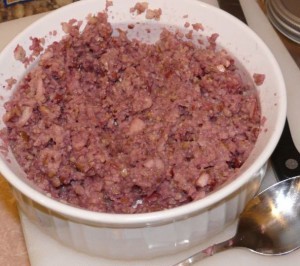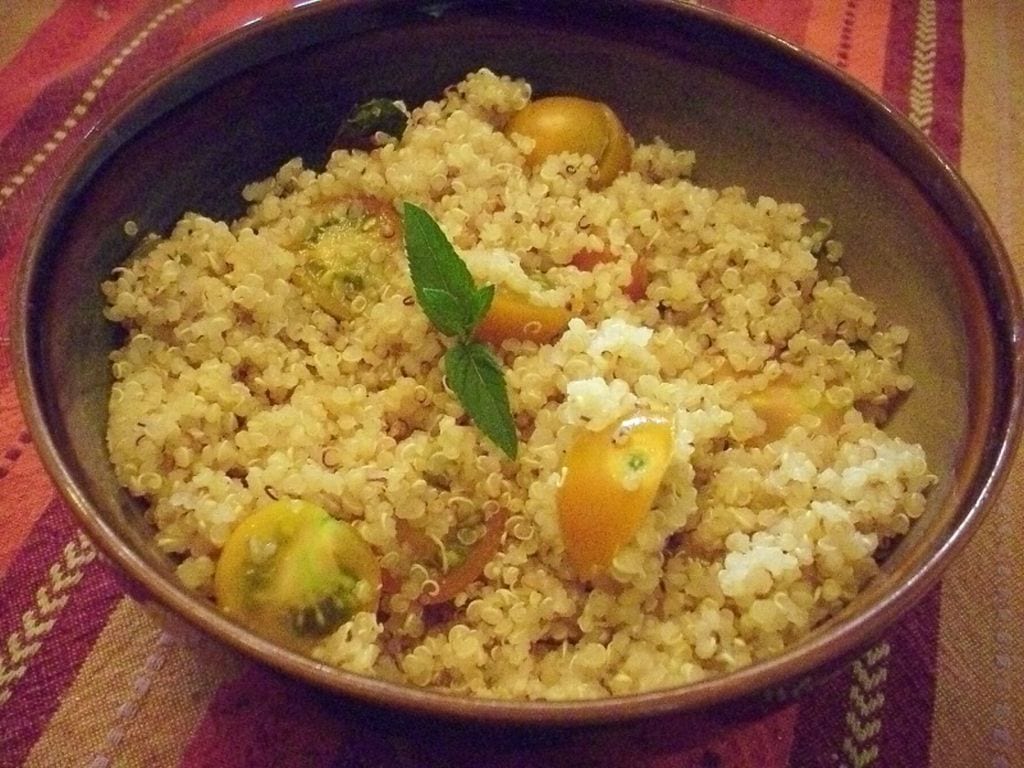 Passover isn’t here until March 27th but many of the products are already appearing in grocery stores. Not all Passover foods are gluten-free, but many are, and there’s a much wider selection than usual at the grocery store. This can be a good time to stock up on GF cakes and mixes, cookies, macaroons, some of the “bread” crumbs and supplies like potato starch. As an added bonus for people with multiple restrictions, most Kosher for Passover products contain no corn or soy products, either.
Passover isn’t here until March 27th but many of the products are already appearing in grocery stores. Not all Passover foods are gluten-free, but many are, and there’s a much wider selection than usual at the grocery store. This can be a good time to stock up on GF cakes and mixes, cookies, macaroons, some of the “bread” crumbs and supplies like potato starch. As an added bonus for people with multiple restrictions, most Kosher for Passover products contain no corn or soy products, either.
In a nutshell, the basic rule of foods for Passover is no leavened foods, which eliminates normal breads, cakes etc. Matzo is the main exception. Matzo is an unleavened bread usually made from wheat and is eaten regularly, and some products contain products with Matzo and matzo meal, which also potentially listed as cake meal or farfel. However, many products don’t contain gluten. Or, if you find products labeled “non-gebrok or gebroktz or grebrochts” (or another spelling variation) they’re non-grain containing and therefore have no gluten-containing ingredients. Often Kosher for Passover products and cakes are made of potato flour or nut meals rather than wheat or glutinous grains.
As always in the gluten-free world, read labels carefully. “Kosher” and “Kosher for Passover” are two different things entirely. Kosher for Passover foods will be labeled “May be used for Passover” or have a symbol that says OUP. I have often seen “regular” Kosher foods in the Passover section at grocery stores, so please do check the labels very carefully.
Keep in mind that many Passover foods are imported from other countries. Technically, imports must follow the FDA allergen labeling laws, but I can say I’ve seen many that aren’t labeled quite in the same way as the FALCPA U.S. labeling laws dictate So the label on an import may say matzo, but may not say “wheat” explicitly or have the disclaimer stating that it contains wheat.
Most Kosher for Passover products will have to adhere to strict standards for cross contamination from a religious perspective. Voluntary allergen labeling statements (AKA “Made in a factory” claims) are still not regulated.
From a gluten-free perspective, possibly the best part of Passover is AFTER Passover, when all of the great gluten-free goodies are on sale! Passover ends April 4th 2021, so mark your calendars, because the word has gotten out in gluten-free circles and the mad rush is on.
Back when you really couldn’t get GF prepared foods in the regular grocery store, this was a much bigger deal. But it’s still nicer to have an expanded selection, and nicest of all is AFTER Passover, when all of the products are on sale!
For people who DO celebrate the actual holiday of Passover, not just the gluten-free food, here are some great recipes and information:
- Jules has some wonderful recipes
- A Passover recipe roundup
- Matzo here that looks tasty https://www.fearlessdining.com/gluten-free-matzo-dairy-free-too/
- …and here https://www.thespruceeats.com/gluten-free-oat-matzoh-cracker-recipe-1451352
- I’ve got my Kosher for Passover dessert recipes here. Remember, you’ve got to use KFP ingredients! http://www.gfgoodness.com/?p=6255
- Elana’s Pantry has an extensive roundup: https://elanaspantry.com/passover-recipes/ and another “Paleo” version here
- Gluten-Free Bay has an extensive list. It is from several years back, but it’s still a great resource.
Other favorite gluten-free recipe sites for Passover? Let me know in the comments section on my website.
Lately, Whole Foods has stocked a gluten-free Matzah, and the brand is Yehuda, so keep your eyes peeled! You can also get it on Amazon. It’s not technically matza because it’s not made of oats, but it’s “Matzo style squares”. There are also many more Kosher markets, such as Kosher Mart in Rockville. Some local grocery stores also have a great selection.

